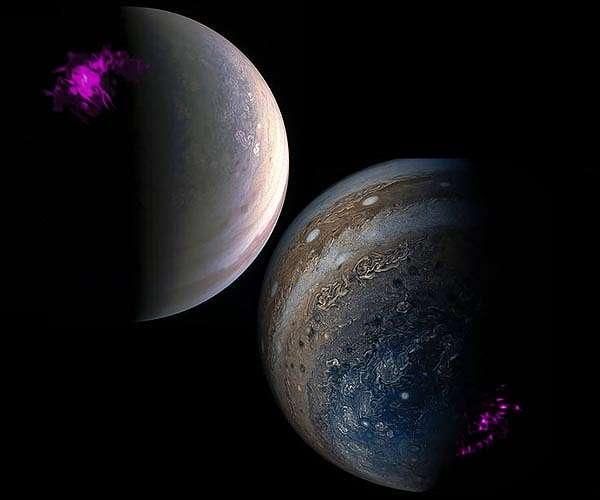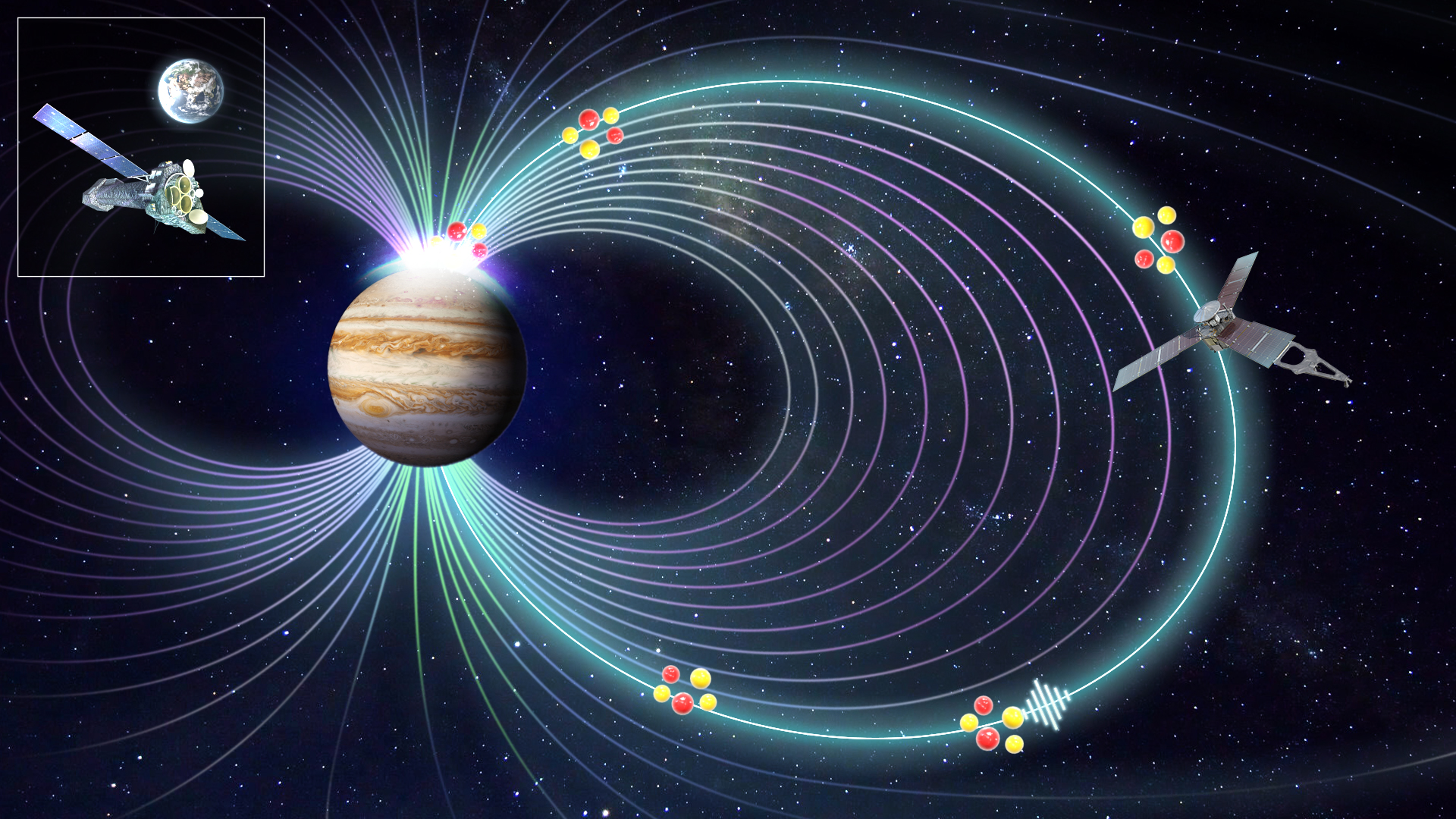Mystery of Jupiter's powerful X-ray auroras finally solved
The giant planet's auroras aren't so different than those on Earth

Mysterious flares of X-rays from Jupiter's auroras suggest that the giant planet's "northern lights" may possess unexpected similarities with those of Earth, a new study finds.
Auroras, the shimmering displays of radiance known as the northern or southern lights on Earth, are seen above the poles of a number of planets across the solar system. These dancing lights are produced when energetic particles from the sun or other celestial bodies slam into a planet's magnetosphere — the area controlled by a world's magnetic field — and flow down its magnetic field lines to collide with molecules in its atmosphere.
Jupiter's magnetic field is extremely strong — about 20,000 times more powerful than Earth's — and therefore its magnetosphere is extremely large. If that alien magnetosphere were visible in the night sky, it would cover a region several times the size of our moon. As such, Jupiter's auroras are much more powerful than Earth's, releasing hundreds of gigawatts — enough to briefly power all of human civilization.
In photos: Juno's amazing views of Jupiter

Jupiter's auroras also emit unusual X-ray flares, ones that originate from electrically charged sulfur and oxygen ions spewed out by Jupiter's volcanic moon Io. Jupiter's X-ray auroras alone each release about a gigawatt, about what one power station on Earth might produce over several days. These X-ray auroras often pulse like clockwork, in regular beats a few dozen minutes long for dozens of hours.
The specific mechanisms driving these flares has long been a mystery. "For more than 40 years, we have been puzzling over what may cause Jupiter's spectacular X-ray aurora," study co-lead author Zhonghua Yao, a planetary scientist at the Key Laboratory of Earth and Planetary Physics in Beijing, told Space.com.
To uncover the sources of these flares, researchers used NASA's Juno probe, which orbits Jupiter, to inspect the giant planet's magnetosphere close up on July 16 and July 17, 2017. At the same time, they had the European Space Agency's XMM-Newton telescope, which orbits Earth, remotely analyze X-rays from Jupiter.
Sign up for the Live Science daily newsletter now
Get the world’s most fascinating discoveries delivered straight to your inbox.
The scientists discovered that the X-ray flares are apparently triggered by regular vibrations of Jupiter's magnetic field lines. These vibrations generate planetary-scale waves of plasma — clouds of electrically charged particles — that send heavy ions "surfing" along the magnetic field lines until they smash into the planet's atmosphere, releasing energy in the form of X-rays.
Similar plasma waves help generate auroras on Earth. As such, despite Jupiter being so much bigger than Earth in every way — such as greater mass and diameter, more energy, stronger magnetic fields and faster rotation — "it seems like the processes responsible for Jupiter’s ion aurora and Earth’s ion aurora are the same," study co-lead author William Dunn, an astrophysicist at University College London, told Space.com. "This hints at a potential universal process for space environments."
It remains unclear why Jupiter's magnetic field lines vibrate regularly. Possibilities include interactions with the solar wind, or with high-speed plasma flows within Jupiter's magnetosphere, the researchers said.
The electrically charged particles the researchers spotted hurtling toward Jupiter's poles may not appear to have enough energy to generate X-ray aurora, "so they need to undergo some extra acceleration on the way," Yao said. "What are those extra acceleration processes?"
The scientists suggested that huge voltages that may exist above Jupiter's atmosphere may accelerate these electrically charged particles "towards the atmosphere with colossal energies," Dunn said. "These probably play a key role."
In the future, Yao suggested investigating other worlds to see if plasma waves might help drive auroras there as well. Similar activity may occur around Saturn, Uranus, Neptune and likely exoplanets as well, with different kinds of charged particles "surfing" the waves, he said.
The scientists detailed their findings online July 9 in the journal Science Advances.
Follow us on Twitter @Spacedotcom or Facebook.











